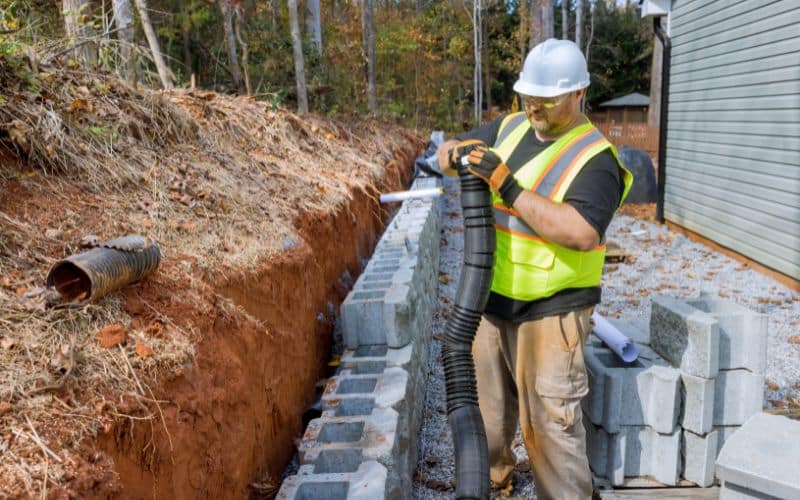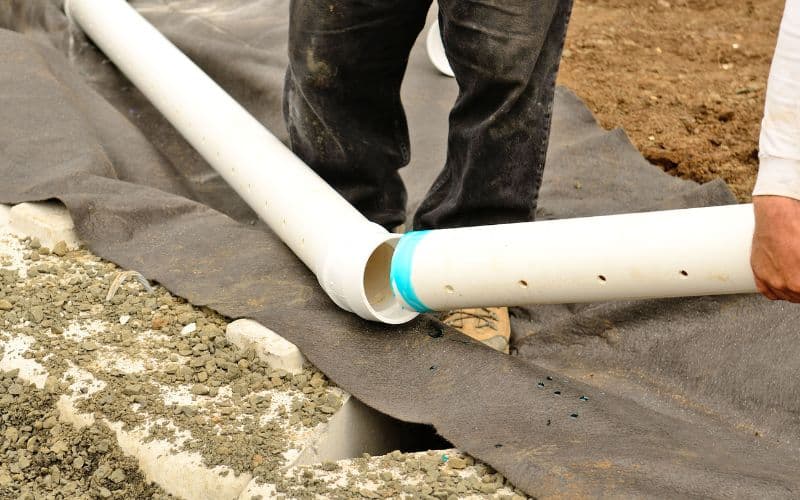
The Importance of Choosing the Right Backfill for a Retaining Wall
Picture this: a beautifully designed retaining wall, standing tall and proud in your landscape. It’s not just a pretty face; it’s a workhorse that holds back soil and prevents erosion. Yet, its true strength lies hidden from view—in the backfill tucked behind its sturdy blocks. Selecting the right backfill is like choosing the perfect supporting actor; it may not grab the headlines, but it’s essential for a stellar performance. Get the backfill right, and you’ve set the stage for a retaining wall that excels in both form and function, from effective drainage to rock-solid stability.
What is Backfill and Why Does Your Retaining Wall Need It?
Think of backfill as the unsung hero in the drama of retaining wall construction. It’s not merely a filler; it’s a performance enhancer. The right backfill material not only ensures efficient drainage but also gives your wall the sturdy backbone it needs to stand against the elements. In essence, the quality of your backfill is a predictor of your retaining wall’s long-term success.
Gravel vs. Native Soil: Which is the Best Backfill for a Retaining Wall?
The backfill arena offers a variety of contenders, but gravel and native soil often steal the spotlight. Gravel, with its superior drainage capabilities, is like the star athlete that everyone notices. Native soil, however, is the hometown favorite—always available and reliable, but perhaps lacking in drainage prowess. The trick lies in creating a dream team of backfill materials, blending gravel and soil in just the right proportions to achieve both stability and efficient drainage.

What Goes on Behind a Retaining Wall: The Role of Drainage
If retaining walls had backstage secrets, drainage would be the juiciest one. It’s not just about keeping water away; it’s about managing the flow to prevent the buildup of hydrostatic pressure, a wall’s worst enemy. Imagine hydrostatic pressure as the villain in this story, lurking behind your wall, ready to push it over. The right backfill material acts as your wall’s personal security detail, directing water away through drainage pipes or weep holes. So, when you’re selecting backfill, consider materials like gravel that allow water to drain efficiently, reducing the risk of water damage and soil erosion.
How to Compact Backfill Behind the Wall for Maximum Stability
Let’s talk about the art of compaction. It’s like the final rehearsal before the big show, ensuring every element is in its right place. Skipping this step is akin to forgetting your lines on opening night—a recipe for disaster. Compacting your backfill material, whether it’s gravel or native soil, is crucial for the wall’s longevity. The process involves adding the backfill in layers, usually about 8 to 12 inches thick, and then compacting each layer with a mechanical compactor. This creates a tightly packed structure that gives your wall the stability it needs to withstand both gravity and the elements. It’s a meticulous process, but one that pays off in the form of a durable, long-lasting retaining wall.
What Materials Should You Use to Backfill a Retaining Wall?
The choice of backfill material can vary depending on the type of retaining wall you’re building. Gravel is often recommended for its drainage capabilities, but other materials like sand or a soil-gravel mix can also be effective. Always consult with a professional to determine the best backfill material for your specific needs.
How Does Hydrostatic Pressure Affect Retaining Wall Backfill?
Hydrostatic pressure is like that uninvited guest at a party—always showing up when you least expect it and causing all sorts of trouble. This force, exerted by water against your retaining wall, is a silent but potent threat. If your backfill material doesn’t offer adequate drainage, hydrostatic pressure can accumulate, causing your wall to bow, crack, or in worst-case scenarios, collapse like a poorly built house of cards. To counter this, opt for backfill materials like gravel or a gravel-soil mix that facilitate easy water flow, thus reducing hydrostatic pressure. Some even go the extra mile by installing a drainage pipe directly behind the wall to channel water away more efficiently.

Why is Efficient Drainage Crucial in Retaining Wall Design?
Drainage isn’t just a footnote in the story of retaining wall design; it’s a headline act. While we’ve mentioned it before, its importance can’t be overstated. Efficient drainage is like the stage manager in a production, ensuring everything runs smoothly. Without it, you’re setting the stage for hydrostatic pressure to make an unwelcome appearance. Features like perforated drainage pipes, often placed at the base of the wall, can be game-changers. They collect and channel water away from the wall, acting as an additional line of defense against water buildup and soil erosion.
What Are Weep Holes and How Do They Allow Water to Drain?
Weep holes are the unsung heroes in the drainage game. Think of them as tiny escape routes for trapped water. These small openings punctuate the face of the retaining wall, offering water a way out and relieving hydrostatic pressure. It’s like having a series of mini-exits for water to make a quick getaway. Weep holes work hand-in-hand with your chosen backfill to create a comprehensive drainage system. They’re often strategically placed in areas where water tends to accumulate, ensuring that water doesn’t stage a hostile takeover behind your wall.
The Role of Perforated Pipe Installed Directly Behind the Wall
Consider a perforated drainage pipe as your retaining wall’s personal concierge, expertly guiding water away from areas where it’s not wanted. Positioned directly behind the wall, this pipe is like a backstage passageway for water, collecting it and then ushering it away from the wall’s structure. It’s not just a pipe; it’s a strategic component of your wall’s drainage system. Working in concert with your carefully selected backfill material, the perforated pipe amplifies your wall’s ability to manage water, reducing the risk of water damage and extending the lifespan of your retaining wall.
Conclusion: Ensuring Proper Retaining Wall Backfill and Drainage
Building a retaining wall is an investment, and like any investment, you want it to last. The backfill you choose and how you manage drainage are pivotal factors in the longevity of your wall. From the type of backfill material to the inclusion of drainage pipes and weep holes, every detail counts.
So, the next time you’re planning to build or repair a retaining wall, don’t underestimate the power of the right backfill and proper drainage. Your wall will thank you, and so will your landscape.








